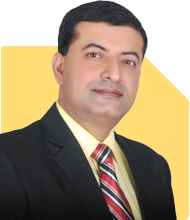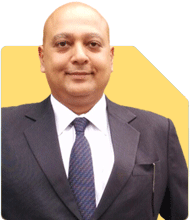Shekhar Kumar |136 Answers |Ask -Follow
Leadership, HR Expert - Answered on Apr 29, 2024
He has also mentored middle and senior management professionals for leadership positions and guided them in career development.
Shekhar has a bachelor's degree in business management from Magadh University, Bihar, and a master's degree in human resource management from Annamalai University, Tamil Nadu.... more

I am a tyBsc zoology student, just completed all my semester exams, failed in iit jam entrance exam and had given gat b 2024 entrance exam; but due to the easy level of this year's paper.. I am expecting a high cutoff which leaves with a possibility that i won't even get admission through this entrance score I wanted to do Masters in biotechnology But i am really uncertain about my future, what should i do next, how should i plan and proceed ? If you ask about my 3 years bachelors journey then i had volunteered to work in college lab , but unfortunately it wasn't useful as i just learnt the theories here too and didn't get much practical exposure. I got first prize in science exhibition which boosted my interest in science so i applied for summer research fellowship which was available for bsc, btech,and mtech 2nd year students but failed to get a guide there too and couldn't get selected for internship, when i looked at the selected candidates list0; the spot i applied to.. was given to a btech student from iit bombay , so i thought i need more practical experience and a good college . Therefore, firstly I wrote a research article in college's first research booklet which is going to get published soon But for good college, i don't think i am going to get into one, so i am really confused right now ...what should i do ?? I want a good college so that i will get good practical research exposure to gain some research skillsets.
Ultimately, it's important to stay proactive, adaptable, and open-minded as you navigate your academic and career journeys. Keep exploring opportunities, gaining experience, and pursuing your passion for biotechnology, and you'll find a path that leads to success and fulfillment in the field.
You may like to see similar questions and answers below
Mayank Chandel |498 Answers |Ask -Follow
IIT-JEE, NEET-UG, SAT, CLAT, CA, CS Exam Expert - Answered on Jun 10, 2023
Sushil Sukhwani |356 Answers |Ask -Follow
Study Abroad Expert - Answered on Apr 23, 2024
Mayank Chandel |498 Answers |Ask -Follow
IIT-JEE, NEET-UG, SAT, CLAT, CA, CS Exam Expert - Answered on May 05, 2024
Anu Krishna |865 Answers |Ask -Follow
Relationships Expert, Mind Coach - Answered on May 15, 2024
Patrick Dsouza |242 Answers |Ask -Follow
CAT, XAT, CMAT, CET Expert - Answered on May 15, 2024
Patrick Dsouza |242 Answers |Ask -Follow
CAT, XAT, CMAT, CET Expert - Answered on May 15, 2024
Patrick Dsouza |242 Answers |Ask -Follow
CAT, XAT, CMAT, CET Expert - Answered on May 15, 2024
Ramalingam Kalirajan |2273 Answers |Ask -Follow
Mutual Funds, Financial Planning Expert - Answered on May 15, 2024
Ramalingam Kalirajan |2273 Answers |Ask -Follow
Mutual Funds, Financial Planning Expert - Answered on May 15, 2024
Ramalingam Kalirajan |2273 Answers |Ask -Follow
Mutual Funds, Financial Planning Expert - Answered on May 15, 2024
Patrick Dsouza |242 Answers |Ask -Follow
CAT, XAT, CMAT, CET Expert - Answered on May 15, 2024
Ramalingam Kalirajan |2273 Answers |Ask -Follow
Mutual Funds, Financial Planning Expert - Answered on May 15, 2024
Ramalingam Kalirajan |2273 Answers |Ask -Follow
Mutual Funds, Financial Planning Expert - Answered on May 15, 2024
























